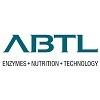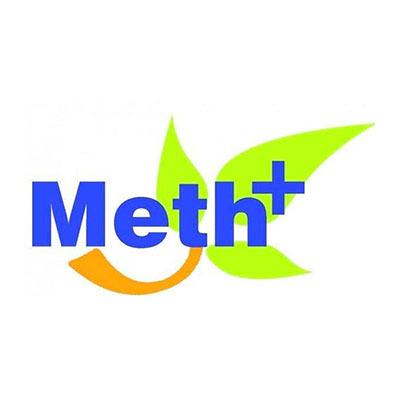Common mistakes using enzymes in poultry nutrition
Hi Pirzado M.Zakria
There is a matrix for multienzymes use. The general rule is: minerals from Phytase, energy from NSP and protein from protease (as 100%). From other enzymes, we take 50-25%. This is a simplification, of course, and the composition must be considered individually. For exact calculation please ask the producer/distributor as DSM, Danisco, AB or Addiseo.
I am asking for use of individual enzyme not a complex of enzymes. How can we manage in that case?
What individual enzyme you mean?
The correlation of enzymes is an aspect that interferes in the performance results and gather this improvement is truly a challenge but possible with the growth model, it becomes more elucidative.
@Dr. Fiodor S. Marchenkov, totally agree, but there is also a big problem that impacts response of enzymes, most individual matrices are also evaluated under conditions that do not apply in practice, look values from phytase commercial phytases, blame 5 - 10 improvement on amino acids digestibilities at 500 ftu, but several New publications confirm papers published with Dr. Parsons lab, matrices due to secondary effects are wrong, so values from phosphorus-deficient diets are not correct to arrive conclusions, when put phosphorus levels in the right value, this is a secundary effect, we need phosphorus to absorb aminoácids, Dr. Hans Stein, showed recently, phytases release from 0 to 5 % amino acids and some times, to get that release, need more than 2000 ftus, be careful not only with cocktails, but also with individual matrices



Digestible lysine requirements of male broilers from 1 to 42 days of age reassessed

@Alvaro Dubois Nutrient Matrix Value.
1. Matrix values describes the amount of additional nutrients that are released when you add the enzymes.
2. Nutrient matrix values indicate the amount of Metablizable energy(ME), Protein and Amino Acids that are anticipated to be released once an Enzyme is added to the feed formulation.
3 ME that can be adjusted may lie in the range of 50-125 KCal.
4. In cases, where more than one feed additive is used to adjust the ME, the maximum ME that can be adjusted would be upto 125Kcal to 150Kcal.
5. Different feed additives manufacturers claim variable ME that will be released after adding the additives.
6. Please note that aggregate ME will be maximum 150 ME that will be released from the substrate.
Dr V.Rajendra Prasad
Please send me an email luisluna@allegrolf.com.br, and we can run some cases with the model BroilerOpt.


Dear @Alvaro Dubois, the modern usage of enzymes from phytase up to muramidase faces two different perspectives for me: nutrient releases and antinutritional and allergenic mitigation effects.
Nutrient Releases are not so complex as it is possible to take the information from the lab.
Antinutritional effects reduction is more complex as even in large production units there are different sensibilities patterns, in this case, working with the big data and growth models helps a lot to properly allocate the enzymes and their combinations.
Furthermore, we are also in the time that safety margins are costing a lot, so ME per kg of live birds in each age and Lys deposition are good information for building proper confidence in the growth models calibration.


Hi Everyone. Thanks for addressing the good and the bad about formulating multiple enzymes in the same diet. As a result of the great improvements in Enzymes and other Additives, people like Dr. Frank Ivey with his Broiler Opt, and others who know how to model animals have in effect taken the problem out of the structured Linear Programs that i and others have developed over the last 40 years. And, basically, they have demonstrated that one cannot just put matrix values into the Formulation Program and hope that one gets a "usable solution" let alone a "Better Solution".
In effect we have to change the tools to allow the knowledge to get into the solution with a useable result. The good news is this is relatively easy.
The problem is not the "Better Solution". The problem is integrating your "Better Solution" with the existing Formulation Systems since they do a very good job before and after a solution is arrived at.
Looking back, it comes down to providing a way to get needed data into the matrix, adding a capability to review a solution automatically, and then, keeping a solution that somebody says is a "Better Solution".
.jpg&w=3840&q=75)

Effects of superdoses of phytase on peaking Hy-Line W-36 laying hen egg production and egg quality
Hello, your content is correct. But the age of the bird and the operation or physiological activity of the digestive system. They are more important with the ingredients of the food than the ingredients of the enzyme. Because the composition of the enzyme depends on the age of the bird according to the growth or genetic development and the composition of the food. You are reminded of the activity of enzymes and the amount of calories they are able to release. It is necessary to consider the strength or activity of the endogenous enzyme inside the bird's body in relation to the bird's age. On the other hand, the activity of bacteria or fungi in probiotics or the origin of enzymes must be observed in terms of the need for nutrients and energy inside the bird's body, which is itself considered a living organism. However, it is not easy to say how much energy metabolism has.


CYSTEAMINE HCL 50% - Digestive Enzymes
Thanks for valuable information and contributions, the gut environment is also important and gut maturation is also essential as well as the strain of chickens broilers vs. layers, ducks and quail.
There are many contributing factors to the nutrient matrix value of enzymes.
Hello
It is respectfully recalled that according to the results of the experiment using multi-enzyme with barley in the diet of laying hens, the quality of eggs, especially the shell, decreased. Please, if your scientific colleagues have observed such results and scientific articles in their farm or research experiments, please send them to the email below. Thanks
Yaqabfar@yahoo.moshatahe
It is respectfully recalled that according to the results of the experiment using multi-enzyme with barley in the diet of laying hens, the quality of eggs, especially the shell, decreased. Please, if your scientific colleagues have observed such results and scientific articles in their farm or research experiments, please send them to the email below. Thanks
Yaqabfar@yahoo.moshatahe
The best way to use an enzyme product would be to know how each bulk ingredient is affected by the product. That prevents us from limiting the choices we have when formulating in changing ingredient markets. We cannot be sure that the enzyme product will provide the same value if we see reducing one energy source or protein source for another when the prices are favorable unless we know how each ingredient will be affected.
In my opinion, companies marketing enzyme products should have a set of nutrient values for each ingredient the user may feed. Without this, we lose the ability to accurately formulate feeds. As bulk ingredient costs change, the formulas change. If more energy is released from maize, we will undervalue maize in a formulation because we fail to give it credit for the additional energy our chosen enzyme product releases. Then, when costs dictate that we replace maize with a suddenly less expensive source of energy and protein, we cannot be sure that we get the same benefit from the enzyme product.
The difficulty is knowing the actual contribution from each ingredient. The fact that the percentages of each bulk ingredient in each diet we use does vary allows us to begin to interpret the results. The only piece of data that we need to determine an enzyme product impact, after feeding, is to know what nutritional values must have been fed to get the observed outcome. Accurate prediction of flock growth from nutrition is the key and can come from accurate growth programs that do that prediction.
Obviously, the amount of energy released from maize in a starter feed cannot be the same as the energy released from maize in a finisher diet. Also, the sum of energy released from the different ingredients must be equal to the energy required to match the growth. So, a series of simultaneous equations are required, finding the matching energy expression that fits the minimum nutritional change that gives the growth.
This is the challenge, and, in my opinion, the results should be expressed and percent change of the initial ingredient values. Now, the ingredient plus its share of enzyme product cost can be fairly evaluated in formulations. Obviously, the formulation cannot contain native products and enzyme enhanced products together as the decision to add the enzyme impacts all ingredients.


PROTEIN HYDROLYSATE POWDER - Soya Base

Dear Dr. Ivey.
It's always a pleasure to read your comments, especially the ones related to the use of mathematical modeling. I do understand (at least I hope) the concept you put forward on how to establish impact of enzymes on individual ingredients' nutritional matrix. I think it might work reasonably well as long as we are dealing with very simple diets. As we increase the number of ingredients (energy/protein supplying ones) the proposed mathematics proposed becomes quite complicated in trying to separate the individual contributions. Maybe the most important reason is that you start to have large confounding between ingredient variations (ingredients going up or down together), turning any estimation heavily biased. A second problem I see is that enzymes (whatever phytase, carbohydrases, proteases, etc) do not provide only improvement in energy digestibility but also in amino acids (see Dr. Cowieson's many meta-analysis papers). You can have basically the same change in performance with different combinations of energy and amino acids (ideal protein). In this way, when considering both problems together, I have a hard time believing we can, from a trial and based only on performance impact, generate the individual ingredients' contributions to an added enzyme.
Hoping to hear your comments (and others, of course).


METHPLUS® - Replacer of DL-Methionine
When incorporating enzymes into poultry nutrition, several common mistakes can undermine their effectiveness and economic benefits. Here's a structured overview of these pitfalls:
1. Incorrect Enzyme Selection.
- Substrate Mismatch:
Using enzymes not tailored to the feed's composition (e.g., neglecting xylanase for wheat-based diets rich in NSPs).
- Phytase misapplication.
2. Dosage Errors
Ignoring Product Potency.
3. Storage and Handling Issues:
- Heat/Moisture exposure, as prof. dr. Attia said, & Feed processing damage.
4. Compatibility Oversights:
- Additive Interactions, Neglecting antagonistic effects from minerals (e.g., copper, zinc) or pH imbalances in the gut.
5. Diet Formulation Neglect:
- Nutrient Redundancy, Failing to adjust inorganic phosphorus or amino acid levels post-enzyme inclusion, missing cost and environmental benefits.
6. Assumption of Uniform Efficacy:
- Product Variability.
7. Ignoring Animal-Specific Factors:
- As prf. Attia said, age/health status: Not tailoring enzyme use to developmental stages (e.g., chicks) or health conditions affecting gut environment.
8. Lack of Efficacy Monitoring:
- Absence of Testing.
9. Regulatory and Quality Lapses:
- Non-Compliance, Using unapproved enzymes or inconsistent batches due to poor quality control.
10. Over-Reliance on Enzymes:
- Compensating for Poor Diets.
When focusing on other enzymes commonly used in poultry nutrition beyond phytase and NSPases (e.g., xylanase, ß-glucanase), several mistakes can occur. These enzymes include proteases, amylases, lipases, mannanases, galactosidases, and multi-enzyme blends, each requiring specific considerations. Below are the key errors and oversights:
1. Proteases.
Mistakes:
- Over-Hydrolysis, excessive protease activity can generate bitter peptides (from hydrolyzed proteins), reducing feed palatability.
- Ignoring Endogenous Enzymes: Overlapping with the bird’s own digestive proteases (e.g., pepsin, trypsin), leading to redundancy or nutrient imbalances.
- Substrate Mismatch: Using proteases in low-protein diets where benefits are marginal.
- pH Neglect: Not ensuring compatibility with the gut’s acidic pH (e.g., some fungal proteases work best at neutral pH, limiting efficacy in the proventriculus).
2. Amylases.
Mistakes:
- Energy Overestimation: Assuming amylase allows for drastic reductions in dietary energy without testing actual metabolizable energy (AMEn) responses.
- Overuse in High-Starch Diets: Adding amylase to corn-based diets already rich in digestible starch, offering minimal ROI.
- Heat Lability: Using non-thermostable amylases in pelleted feed, leading to inactivation during processing.
3. Lipases.
Mistakes:
- Bile Salt Deficiency: Using lipases without ensuring sufficient bile salts (critical for emulsification), especially in young chicks.
- Ignoring Fat Quality: Applying lipases to rancid or oxidized fats, which may worsen nutrient absorption.
- Overdosing: Excess lipase activity can release free fatty acids that irritate the gut lining.
4. Mannanases
Mistakes:
- Unnecessary Use: Adding mannanase to diets with low soybean meal content or alternative protein sources (e.g., sunflower meal).
- Immune Response Misunderstanding: Failing to recognize that ß-mannans trigger innate immune responses; overdosing mannanase may suppress this immune priming.
5. Galactosidases (a-galactosidase).
Mistakes:
- Ignoring Substrate Levels: Using galactosidase in corn-wheat diets with negligible GOS content.
- Microbiome Disruption: Over-hydrolyzing prebiotic GOS, which may reduce beneficial microbial growth in the hindgut.
6. Multi-Enzyme Blends. Mistakes:
- Additive Assumptions: Assuming enzyme effects are purely additive without testing synergies/antagonisms (e.g., protease + phytase interactions).
- Redundancy: Including enzymes that target substrates not present in the diet (e.g., adding ß-glucanase to a corn-based diet).
- Dose Imbalance: Using uniform dosing for all enzymes in the blend, despite varying substrate levels and enzyme kinetics.
7. General Mistakes Across All Enzymes:
- Ignoring Bird Age: Using the same enzyme dose for chicks (immature gut) vs. growers/layers.
- Diet Formulation Rigidity: Not reformulating diets to capitalize on enzyme benefits (e.g., reducing supplemental phosphorus with phytase but keeping calcium levels unchanged, disrupting Ca:P ratios).
- Overlooking Gut Health: Enzymes like xylanase improve gut viscosity but may alter microbial populations; abrupt removal can destabilize the microbiome.
- Stability Misjudgments: Assuming all enzymes survive feed processing (e.g., steam pelleting) or storage without verifying thermostability data.
1. Substrate Analysis: Verify substrate levels (e.g., phytate, NSPs) in diets before applying enzymes.
2. Context-Specific Ranges: Define ME ranges based on enzyme type, substrate, and bird age (e.g., 80–100 kcal/kg for xylanase in wheat-based broiler diets).
3. Dynamic Formulation: Use matrix values as a starting point, but adjust formulations based on:
- Feed processing conditions (e.g., pelleting temperature). - Bird health and genetics.
- Regulatory limits.
4. Third-Party Validation: Demand enzyme suppliers provide peer-reviewed data or conduct on-farm trials.
5. Holistic Nutrient Balancing: Pair ME adjustments with amino acid, calcium, and phosphorus reformulation.

@Dr Pragati Salutgi You are absolutely right. The enzymes are always substrate specific. While designing the enzyme products, we always consider the general composition of diet. We only consider the type of cereals and protein sources used. Otherwise we have to design tailor-made enzymes.
Similarly, ME utilisation always depends on composition of diet because of which we always underestimate or overestimate energy values of feed. Biological variation is always there.
We should give less importance to this.
Verifying Substrate Levels in Diets Before Applying Enzymes
Enzyme supplementation in animal feed is a highly effective tool for improving nutrient utilization, especially when it comes to breaking down complex compounds in raw materials like grains, oilseeds, and fibrous plant materials. However, for enzymes to be truly effective, their application must be based on a solid understanding of the substrate they are targeting. Substrate analysis, which involves evaluating the levels of specific compounds like phytates and non-starch polysaccharides (NSPs) in the diet, is a crucial first step before enzyme application.
Let’s explore why substrate analysis is vital and how it informs enzyme recommendations.
1. Why Substrate Analysis Matters
Substrate analysis is essential because it helps identify the types and concentrations of the compounds that enzymes are designed to break down. Different enzymes target different substrates, and understanding the composition of the diet ensures that the correct enzymes are chosen for the job. Without proper analysis, there’s a risk of underestimating or overestimating the necessity of enzyme supplementation, which could lead to inefficient use of resources or suboptimal animal performance.
Targeting Specific Enzyme Functions:
Enzymes like phytase, xylanase, amylase, and cellulase have specific substrates they act upon, such as phytate (in plant-based proteins) or fiber (in cereals and grains). Knowing how much of these substrates are present in the diet allows for targeted enzyme supplementation that optimizes digestion and nutrient absorption.
Improving Feed Efficiency: With proper substrate analysis, you can ensure that enzymes are used where they will have the most significant impact, leading to better feed conversion ratios (FCR), improved growth rates, and overall healthier animals.
2. Common Substrates of Interest in Feed and Their Role
a. Phytate (Phytic Acid)
Phytate is the form of phosphorus found in plant-based ingredients like grains (corn, wheat, etc.), oilseeds, and legumes. However, phytate is largely indigestible to most monogastric animals (pigs, poultry, etc.) because they lack the enzyme phytase that breaks down phytate into more bioavailable forms of phosphorus.
Importance of Phytate Analysis:
If your diet contains high levels of phytate (common in grains and oilseeds), supplementation with phytase enzymes will improve phosphorus availability, reduce the need for inorganic phosphorus supplementation, and decrease environmental phosphorus waste.
Without knowing the phytate content, it’s difficult to gauge the proper phytase dose. Too little phytase could result in insufficient phosphorus utilization, while excessive phytase could be wasteful.
b. Non-Starch Polysaccharides (NSPs)
NSPs are a major component of plant cell walls, particularly in cereal grains (e.g., wheat, barley, oats) and oilseeds. These complex carbohydrates, such as hemicellulose, xylan, and beta-glucans, are poorly digested by monogastric animals.
NSPs and Their Effects:
NSPs form highly viscous solutions in the digestive tract, which can interfere with nutrient digestion and absorption.
Xylanase and beta-glucanase are enzymes that target these polysaccharides. However, their effectiveness is heavily dependent on the NSP levels present in the diet.
Importance of NSP Analysis:
By quantifying the NSP content, you can better understand the challenge posed by fiber in the diet.
Accurate analysis allows you to decide on the type and quantity of fiber-degrading enzymes (e.g., xylanase for xylans or beta-glucanase for beta-glucans), improving the digestibility of the feed and potentially increasing the energy available to the animal.
c. Cellulose
Cellulose, a major component of plant fibers, is highly resistant to digestion in non-ruminant animals. However, cellulase enzymes can help break down cellulose, releasing more fermentable sugars and improving digestibility.
Importance of Cellulose Analysis:
Knowing the cellulose content helps determine whether cellulase supplementation will be beneficial, especially in fibrous diets.
Over-supplementation with cellulase, however, can be wasteful, especially if the diet doesn’t contain significant amounts of cellulose.
3. Methods for Substrate Analysis
To effectively assess substrates like phytate, NSPs, and cellulose, several analytical techniques can be used to determine their levels in the feed. Common methods include:
a. Chemical Extraction
For phytate, specialized chemical extraction methods can isolate the phytate from other forms of phosphorus in the diet. These methods often involve acidic solutions that break down the phosphorus compounds and allow for precise quantification.
Example: The myo-inositol hexaphosphate method is commonly used for extracting and quantifying phytate in feed ingredients.
b. Enzymatic Assays
Enzymatic assays are used to quantify the NSP content in feed. These assays use specific enzymes (e.g., xylanase or cellulase) to break down the polysaccharides, and the resulting sugars can be measured to estimate the NSP content.
Example: The sequential enzyme digestion method uses various enzymes to sequentially degrade fiber fractions, and the sugars released are measured.
c. Fiber Analysis (Neutral Detergent Fiber and Acid Detergent Fiber)
Fiber analysis techniques like NDF (Neutral Detergent Fiber) and ADF (Acid Detergent Fiber) allow for the quantification of fiber content in the diet. NDF measures the cell wall content (including hemicellulose, cellulose, and lignin), while ADF gives a measure of the more indigestible parts of the cell wall, primarily cellulose and lignin.
Example: NDF and ADF can be used in conjunction with other tests to understand the specific fiber components that may benefit from enzyme supplementation.
4. Impact of Substrate Analysis on Enzyme Recommendations
Once the substrate levels are known, enzyme recommendations can be much more accurate and tailored. Here's how substrate analysis directly impacts enzyme strategies:
a. Phytase for Phytate
If high levels of phytate are detected (e.g., in corn or wheat), the inclusion of a phytase enzyme is highly recommended to improve phosphorus availability.
The dosage and type of phytase (e.g., 7-phytase or 3-phytase) will depend on the phytate levels and the specific needs of the diet.
b. Xylanase and Beta-Glucanase for NSPs
If NSPs, such as xylans or beta-glucans, are present in high quantities (common in wheat or barley), then xylanase or beta-glucanase supplementation will help reduce viscosity in the gut, improving nutrient digestibility and energy utilization.
The quantity of enzymes needed will depend on the specific levels of these NSPs.
c. Cellulase for Cellulose
If the feed contains high levels of cellulose (e.g., in forages or fibrous grains), cellulase supplementation can be considered to enhance fiber degradation and increase the availability of fermentable sugars.
By accurately matching enzyme types and dosages to the specific substrates in the diet, feed efficiency can be maximized, and the cost of enzyme supplementation can be justified.


Digestible lysine requirements of male broilers from 1 to 42 days of age reassessed
Plus we have to analyse the activity of enzymes based on the method of analysis as recommended by enzyme suppliers.Which is not again easy task.































.jpg&w=3840&q=75)
.jpg&w=3840&q=75)
.jpg&w=3840&q=75)

